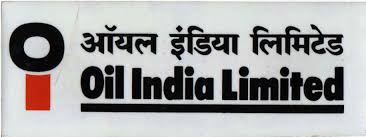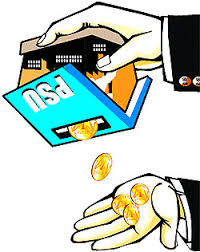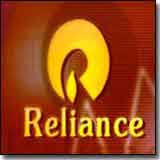 Source:27 May 2010, 0036 hrs IST,Joji Thomas Philip,ET Bureau
Source:27 May 2010, 0036 hrs IST,Joji Thomas Philip,ET Bureau
NEW DELHI: Only seven days after India’s marathon 3G auctions ended, the licence winners have mopped up Rs 36,000 crore in loans of the total Rs 67,719 crore they will have to pay up by the month-end. In return, the seven winners will get airwaves that will enable them to offer services such as video calling and high-speed internet on mobile phones.
An analysis by ET reveals that telcos have also lined up an additional Rs 29,000 crore from their cash reserves and a further Rs 11,000 crore in internal accruals to pay for these airwaves.
A third of the Rs 36,000 crore loans that have been raised by telcos are through the issue of commercial papers (i.e. short-term note issued with a maturity period of one year or less), ET’s analysis reveal. Banking executives say that mutual funds have been the largest investors in these securities issued by telcos over the last couple of days. Commercial papers are usually not listed on exchanges, but are traded over-the-counter and foreign institutional investors are also allowed to invest in these securities
Put simply, the ability of all auction-weary mobile firms already battling a savage price war, to line up funds, erases fears of defaults as witnessed in Europe earlier this decade when mobile firms that had overbid for radio frequencies were unable to meet their commitments.
The country’s top two mobile firms-Bharti Airtel and Reliance Communications (RCOM)-each won 13 of the 22 telecom zones on offer while other major operators Aircel Cellular, Vodafone Essar, Idea Cellular and Tata won a total of 13, 9, 11 and 9 circles, respectively.
Among the seven winners, Bharti Airtel, India’s largest telco will have to shell out the maximum — it must pay Rs 12,300 crore for these airwaves in 13 circles. Bharti has raised Rs 8,500 crore from a consortium of financial institutions, including State Bank of India and HDFC Bank which has agreed to part finance the payment, two executives with direct knowledge of the development told ET. Bharti Airtel’s loan is estimated to spread over six years at an interest of 8-9%. The company did not comment its 3G funding plans, but industry executives aware of Bharti’s strategy say that it will use its cash reserves, which were at Rs 7,700 crore as of March 2010, to pay out the remaining amount for both third generation and broadband wireless spectrum.
Vodafone Essar, the country’s second-largest private operator in terms of revenues, will pay for 3G airwaves from its Rs 10,000 crore loan from SBI. Banking executives said this five-year loan carries an interest rate of less then 10% for the first two years; and thereafter, it will be re-adjusted on the basis of the average prime lending rate of four public sector banks SBI, Punjab National Bank, Canara Bank and Bank of Baroda. Vodafone Essar is securing additional funding by issuing commercial papers and has also got another loan from a consortium of banks, an executive close to the company said without divulging details.
Reliance Communications has so far raised Rs 4,000 crore from selling commercial papers at 6%, of which, LIC has picked up Rs 2,000 crore, while the remaining has been subscribed to by MFs and banks. Executives close to the company said that it was on the verge of finalising an additional Rs 4,500 crore funding to pay for 3G airwaves within the next 48 hours.
Idea Cellular too has figured out its funding for 3G airwaves. Executives with the telco said that over 40% (Rs 2,400 crore) of Rs 5,769 crore that have to paid for 3G airwaves will be through internal accruals. It is learnt that this will largely come from the leftover funds from sale of stake in subsidiary Aditya Birla Telecom to private equity player Providence last year. Idea Cellular has also raised Rs 500 crore in commercial paper, and the remaining amount would be through a mix of long- and short-term loans from a consortium of banks led by IDBI.
“Bharti’s net debt-equity ratio will stand at an estimated 1.35 including the debt taken for the Zain acquisition. Idea’s net debt-equity ratio will rise to 1.03 after the payment of the 3G bid and RCOM’s net debt-equity ratio will rise to 0.73. We continue to believe that Bharti’s financial position remains robust, despite an elevated level of leverage due to its strong cash flows,” Deutsche Bank analysts Srinivas Rao and Amyn Pirami said in a note.
Aircel Cellular, which has to shell out Rs 6,500 crore for 3G airwaves has raised Rs 4,000 crore by issuing commercial papers at 6% interest for a one-year period from Deutsche Bank, Standard Chartered, HSBC and Barclays, an executive with direct knowledge of the development said. This executive also added that the telco had further raised a 12-month bridge loan of about Rs 2,000 crore from HSBC, PNB and Axis Bank. Besides, the company may also use the proceeds from its recent sale of its tower arm, which fetched Rs 8,500 crore, to part fund the licence fee for 3G and broadband spectrums.
Tata Teleservice has so far raised close to Rs 5,000 crore to pay for 3G airwaves, the breakup of which is as follows: LIC has subscribed to 10-year bonds floated by telco for Rs 1,000 crore. It has issued commercial paper for Rs 1,000 crore at 6% with a tenure of one year to various institutions. Tata Teleservices has also secured a five-year Rs 1,500 crore loan from a clutch of banks led by Central Bank of India.
It has further raised Rs 1,100 crore from public financial institutions such as IDBI and Kotak Yearly. Interest rates for all of these range from 7.33 % to 8.3% , its spokesperson said. In addition to this, the telco also has about Rs 6,000 crore reserves in its books from its stake sale to NTT DoCoMo last year and from internal accruals, the company spokesperson added. Tata Teleservices must pay just under Rs 6,000 crore for the 3G airwaves.
S Tel, which won 3G airwaves in all the three circles it currently operates must pay Rs 338 crore for these frequencies, and its CEO Shamik Das told ET that the operator had already secured a ‘Rs 350 crore loan from IDBI at an interest rate of less then 10%’. “This is a bridge loan that will later be converted to a long term loan,” Mr Das added.
State-owned telco BSNL, which has to pay Rs 10,187 crore for 3G airwaves, will fund the entire amount from its cash reserves of Rs 35,000 crore, while MTNL will pay a significant part of its 6,653 crore for these airwaves from its cash reserves which stands at about Rs 5,000 crore, executives at both PSUs said.













